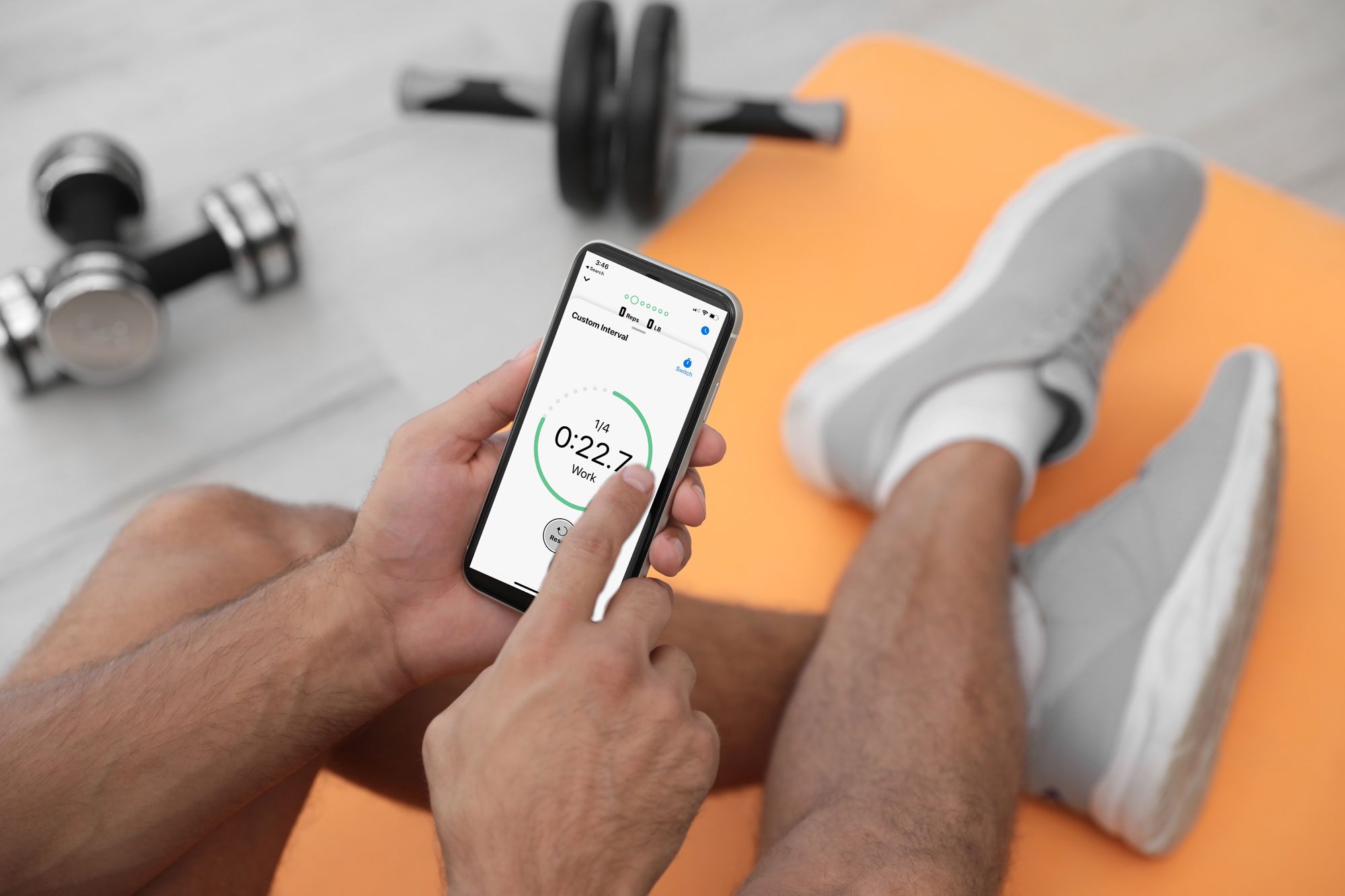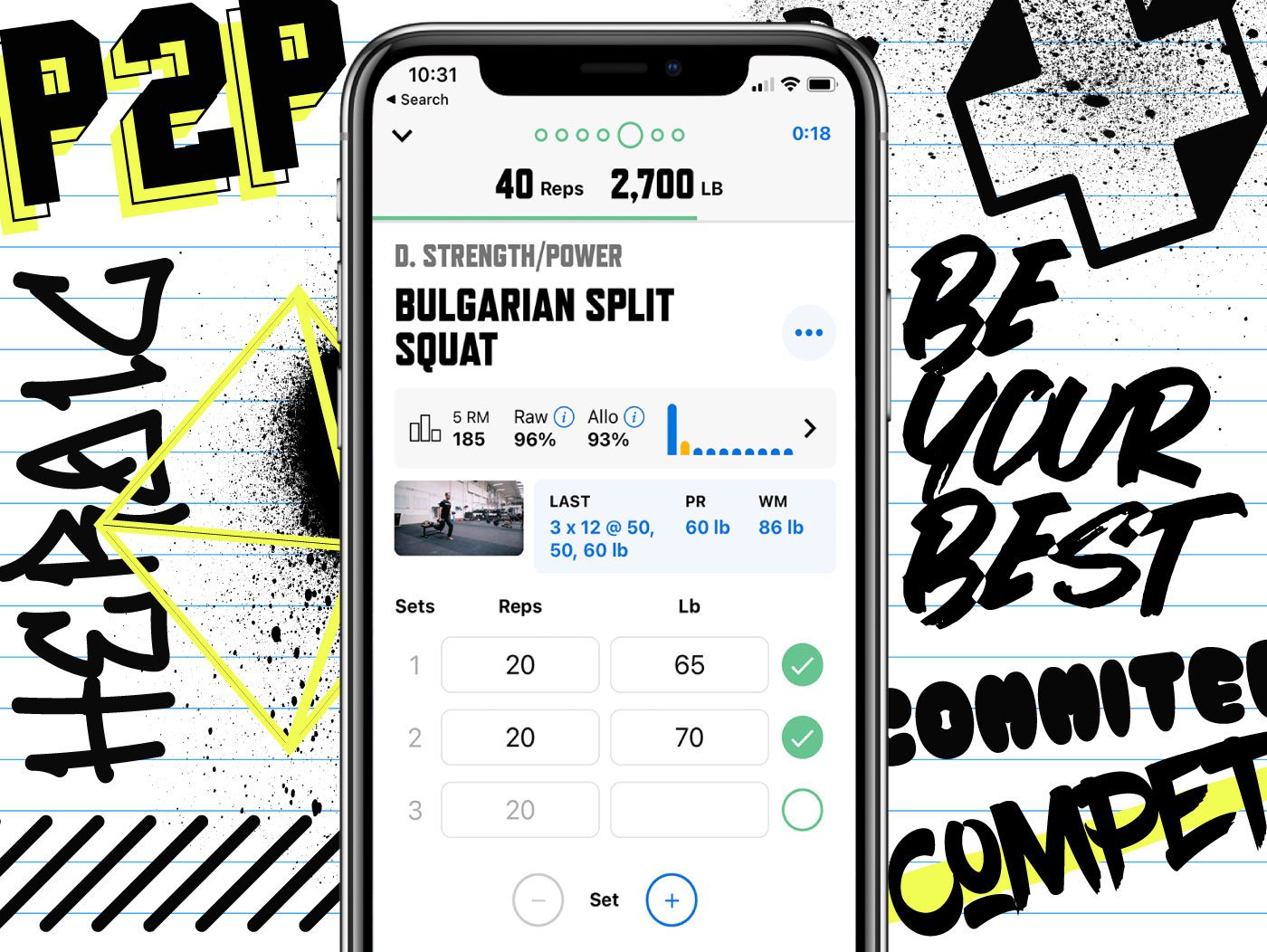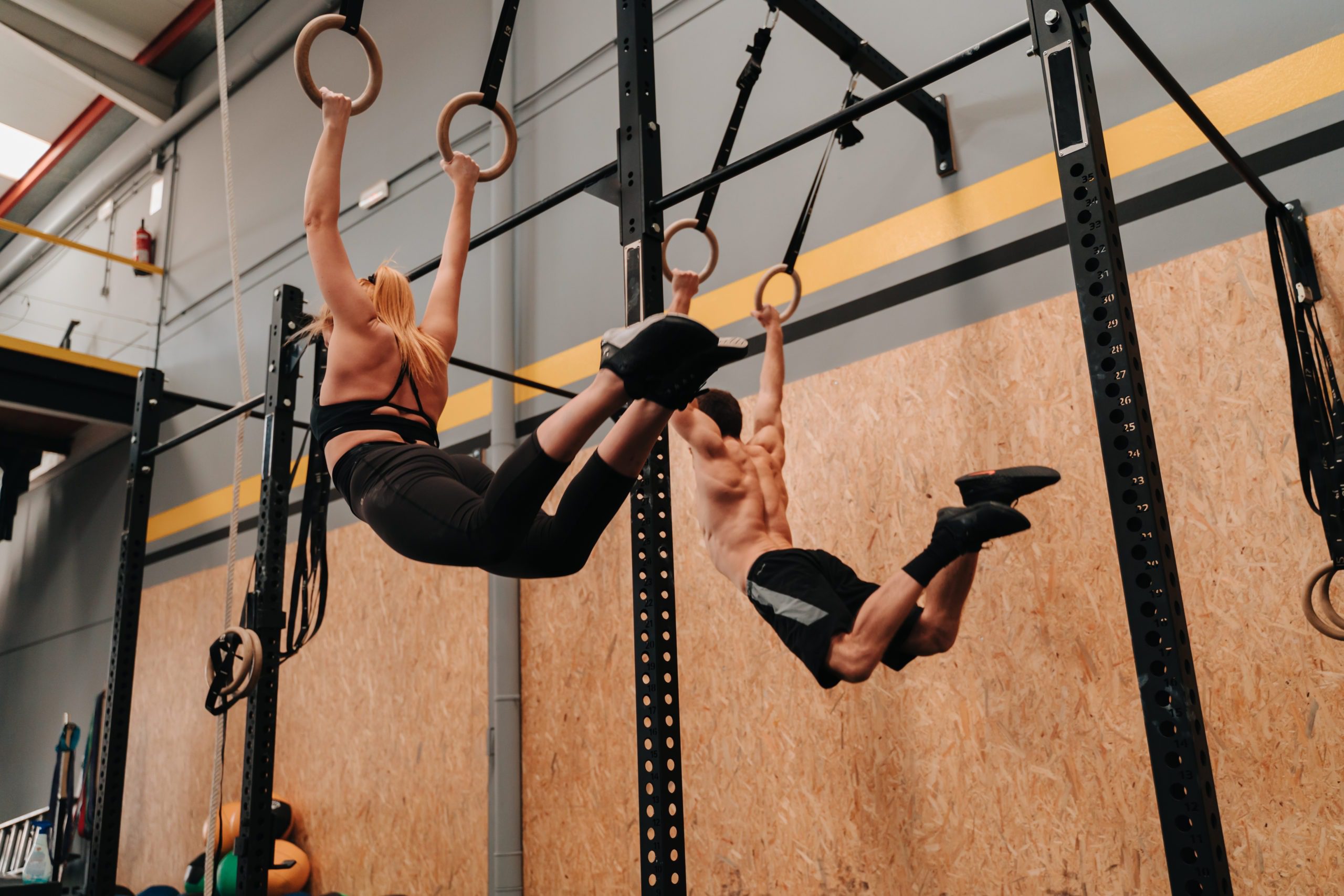Building the best workout timer: strength training is interval training

Why did we set out to build the best workout timer directly into the TrainHeroic app? Because strength training is interval training. In this blog, Adam Dawdy, product manager at TrainHeroic breaks down why we set out to build the world’s best interval timer directly into the TrainHeroic app.



The best workout timer is one that understands strength training is interval training
The famous Tabata workout: 8 rounds of 20s hard work and 10s of rest.
Why does that 10s rest even exist? It’s not much. Why not just go that speed for 3 or 4 min straight? That’d be harder, and driven athletes tend to believe something that’s harder is more productive.
If you’ve ever done a Tabata session, you know you can’t sustain that rate of work for very long. Those intervals are supposed to be at a power output you can only sustain for a short time. Strategic rest allows enough recovery for you to do each interval at the same intensity.
We all know rest periods are fundamental to interval training. It’s just part of the recipe.What about strength training?
You can’t do all the work you need to do at once so you break it up into “work intervals” called “sets” and take rest between them. Sounds awfully similar.
The point: Your rest periods have a purpose, but that purpose often gets confused or lost. Let’s look at some of the problems that come up with rest periods.
Problem 1 – Not understanding the purpose of rest
Why do we break work into sets in the first place? A “set” of an exercise is just a chunk of work with a specific intent – exercise technique, reps, weight, and tempo for a set are all programmed by your coach for a certain reason. If you have to vary from them, are you getting the best results from all your hard work?
One example: training vertical jumps to get better at vertical jumps. To get the best results, you can practice jumping as high as possible. That doesn’t only mean trying to jump as high as you can. It means actually jumping as high as you can, or close to it.
What would happen if you were to jump as high as you can 50 times in a row? By the end, you wouldn’t be jumping very high. It’d feel really hard, but you probably wouldn’t be getting any better at jumping high. You’d be getting better at jumping 50 times in a row.
After only a few consecutive jumps, your performance would diminish to the point where you’d be better-served by ending the set and resting before trying again.You can’t do all the work you need to in one go and get the training effect you’re after.
If your coach has included rest in your program, you’re not being more virtuous or getting better results by cutting it short. It’ll probably feel harder, but that’s not necessarily better.
That rest was included to make sure you get the intended stimulus. There’s a reason for the old saying: “Bad training is one fool getting another fool tired.” Anything feels hard if you do it long enough or fast enough.
It’s strategic doses of work that get you the results you’re after.
That doesn’t mean you shouldn’t work hard. It means that the goal isn’t always for something to feel as hard as possible.
Which brings us to…
Problem 2 – Not resting enough
The second problem we wanted to solve by building a workout timer directly into the TrainHeroic app was not resting enough.
A while back, I started coaching a guy who loved to train hard. While I envied his motor and work capacity, he came to me because he had been trying really hard, doing lots of work, and making zero progress. His training logs showed he’d been stuck at the same weights, and had missed his rep targets regularly.
He had a few things going on, but the biggest change we made was cranking the rest periods way up. He had been knocking out straight sets, with just 30-45s between them. I had him superset non-competing exercises, like bench press and dumbbell rows, with a minute or more between the movements. He was still getting a lot of work done, but his muscle groups got 2:30 or so to recover between sets.
He immediately started hitting his targets again. His training weights started to climb. After a month, he hit a 20lb bench PR. Observing appropriate rest periods was a big part of that.
Here’s the thing: this isn’t rare! A lot of athletes resist resting enough to get the adaptations they’re after. Sometimes they just like to move fast, so they keep their foot on the gas even when it isn’t appropriate. In other cases, they’re time-limited and trying to fit a lot in.
If you want to get strong, powerful, and improve performance in a lift, not only do you need to do the required reps, but the weight on the bar, technical execution, and effort and speed on each rep all matter. These elements are compromised when the rest is too short.
Want to improve the effectiveness of your training? Take a look at how long you’re actually resting between sets of the same exercise using a workout timer. If it’s shorter than 2 minutes or so, try resting a little longer and see what happens.
One thing I’ve seen and experienced is a tendency to rest reasonably between sets of main exercises, but then run through assistance exercises. If you’re doing them, they’re important. If they’re important, pay attention to how you’re doing them. That includes the right amount of rest even for accessory work.
You don’t have to just stand around – supersets can be great! That core or corrective work you put off can also be a great filler.
Can you go by feel and know how long to rest? Some experienced athletes can, but if your instincts lead you to shorter rest and you haven’t tried resting longer in a while, a workout timer can help. A minute or two feels like forever when you’re used to moving fast all the time!





DOWNLOAD
trainheroic’s
free APP
Problem 3 – Losing focus and flow
On the other end of things, it’s easy to let rest go too far. If you aren’t keeping yourself accountable it’s easy to get distracted and lose your flow. Once that happens, it can be really hard to get back “in the zone.” Even if you came in with great intent and focus, you can get bogged down and underachieve.
To keep your head in the game, it’s better to pick a rest period and try to stick to it. If the interval timer goes off after 2 minutes and I still don’t quite feel ready for the next set, I still get into position for the next set, but give myself a bit more time. Then I just adjust the rest time up a bit for the next time around.
Since I started using a timer more often, I haven’t had any issues being productive. More than anything, I let performance from set to set be my guide in how much to rest. The workout timer just helps keep me on task.
Problem 4 – Watching the clock
The final problem we looked to solve by building a workout timer into the app might sound a little counter intuitive: watching the clock.
So you’ve decided to keep yourself on track and make sure you’re resting appropriately. Maybe there’s a clock in view, so you keep an eye on it.
That can work. Just remember this isn’t a science experiment, and the rest period is an approximate thing. You don’t have to be too anxious about it. It’s just supposed to make sure you are taking enough rest to be ready for the next set.
What I’ve noticed with using TrainHeroic’s rest timer is that I can “set it and forget it.” Honestly, I thought it would be rigid and annoying to use a rest interval timer, but I find it’s actually kind of liberating.
I don’t have to worry about it or think about how much time I’m taking. Once it’s going I can listen to my music, hit a drill, and get ready for the next set when the chime sounds. It’s less mental work for me since I can outsource it to the app.
It also tends to keep me in the app. If I have my timer right there and my music or podcast is playing, I don’t have the same temptation to check my email or Instagram.
The Marketplace: Shop Expert Programming from Real Coaches
Sometimes all you need to reach your destination on your fitness journey is an expert guide. We’ve got you covered.
The TrainHeroic marketplace is the only place to purchase programming from the World’s best coaches, delivered through the immersive training experience of the TrainHeroic app.
Browse from thousands of programs for any goal and every type of athlete.
Or, join a monthly programming membership to connect with a real coach and community of athletes training just like you. Try any programming subscription free for 7 days.


Building the best workout timer: Relevant research
If you’re hungry for more info, especially more scientific info, keep reading on.
When you want to know what the body of research says on a subject, systematic reviews and meta analyses are a good place to start. In these, expert authors use rigorous methods to weigh the available evidence.
I’ve gathered 6 studies here that I found useful as we set out to develop the TrainHeroic workout timers.
Based on the 6 studies included here, the research says that there is some good evidence showing that longer rest might be better in trained lifters, but more research would be needed to really be sure.
Scientific beliefs in the area of rest periods in resistance training continue to evolve. For example, it was commonly held that shorter rest periods were better for hypertrophy because of hormonal responses and metabolic factors, but more recent research questions that assumption.
Training studies are hard to run, and there just haven’t been that many good ones that have looked at the impact of rest on hypertrophy.
Here are some sources that shine some light on the importance of rest periods.
Do short rest periods help or hinder muscle growth?
This is not a peer-reviewed study, but Chris Beardsley does a good job and lays out the evidence.
I am not a proponent of his “effective reps” idea he talks about, but that’s a conversation for another time.
The well-known study by Schoenfeld et al., showing favorable outcomes from 3 min vs. 1 min rest periods. You’ll see this one mentioned all around the internet, but remember that it is only one study.
A good example of a study that looks at the effect of rest periods on acute performance. General recommendations for rest during max strength and power training is 3-5 min. However, weightlifters might have as little as 2 min between lifts in competition.
This study looks at what happened when elite weightlifters used 2 min rest periods between attempts instead of 3 min.
Several measures of performance were worse with 2 min rest, and the RPE was higher.
Rest interval between sets in strength training, 2009 (free PDF available)
This is an older narrative review that shows the thinking of the time. Not a lot has really changed from this, except the emphasis on shorter rest being superior for hypertrophy.
It is true that metabolites can be concentrated by short rest periods, and that growth hormone release is related to blood lactate levels, but it’s not true that optimizing for those factors gets you the best results. This is an example of mechanistic evidence not translating to IRL outcomes.





Join the community
Sign up for the latest training news and updates from TrainHeroic



About TrainHeroic
Support
Made with love, sweat, protein isolate and hard work in Denver, CO
© 2021 TrainHeroic, Inc. All rights reserved.


